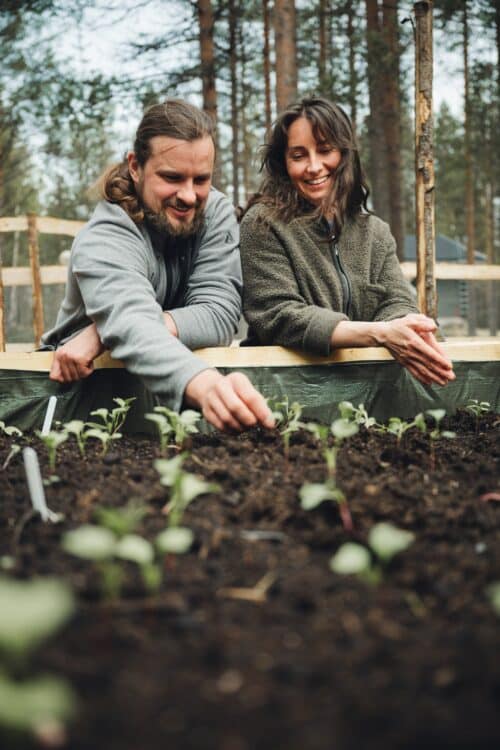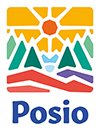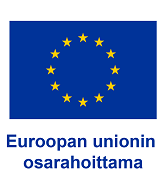

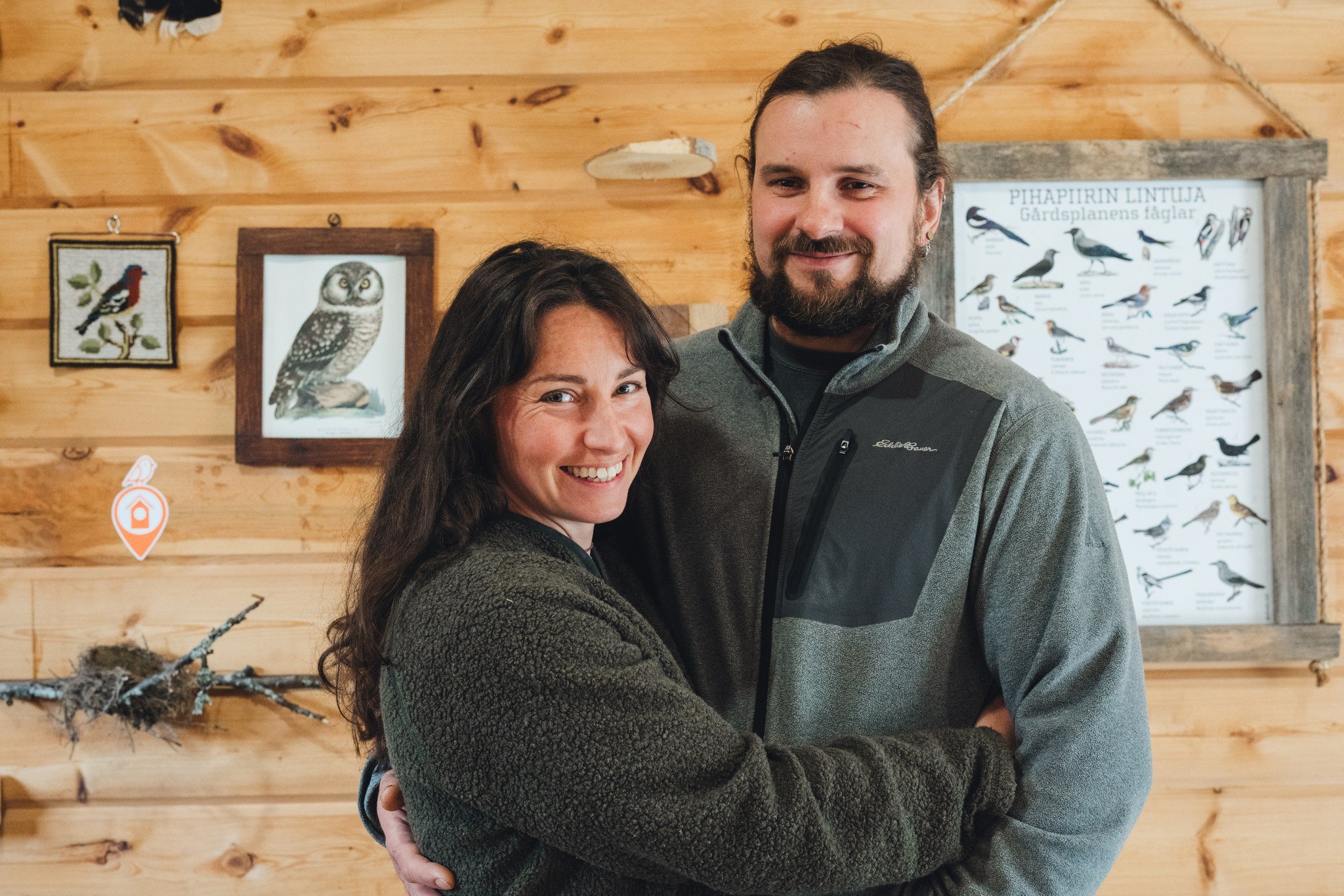
Text: Riikka Tuomivaara
Photos: Eeva Mäkinen
“Kiitos” and a curse word learned at a Children of Bodom gig.
These were the first two words Polish-born Tomasz Bogacz knew when he moved to Finland seven years ago. Tomasz had worked as a chef for thirteen years in the bustling metropolis of Warsaw, where life was hectic and noisy.
“I had a crisis,” Tomasz describes his situation.
Through his Finnish friends, Tomasz ended up visiting Tampere and quickly realized Finland had everything he longed for: peaceful people, forests, and a good quality of life.
“I gave myself six months. If I could sort out a job, an apartment, and the paperwork, I would stay in Finland,” he recalls.
Although he considered continuing his career as a chef, he vividly remembers standing outside a restaurant holding his CV, debating whether or not to go in. In the end, he threw the CV away and called a staffing agency. They offered him a job as a dishwasher.
“I said yes right away. Soon I realized that everything I had hoped for had come together.”
Still, the idea of wilderness guide school had been simmering in the back of his mind since his days in Poland.
Meanwhile, Theresa Rauma, who came from the small village of Teerijärvi on Finland’s west coast, was dreaming of a more nature-centered lifestyle. She had worked in the film industry for four years.
“But it was so mentally and physically draining that I decided I couldn’t continue.”
Having spent much of her childhood at her family’s cabin in Jäkäläniemi, Kuusamo, she always felt at home in nature.
“Living in Helsinki was lonely, and I spent a lot of time in nearby forests. While lying in a hammock, I realized the city was too stressful for me. That’s when I remembered I had once decided to study to become a wilderness guide.”
On the first day of wilderness guide school in Tampere, the students shook hands with one another.
“The only thing I remember from that day is Tomasz’s eyes,” Theresa says with a smile.
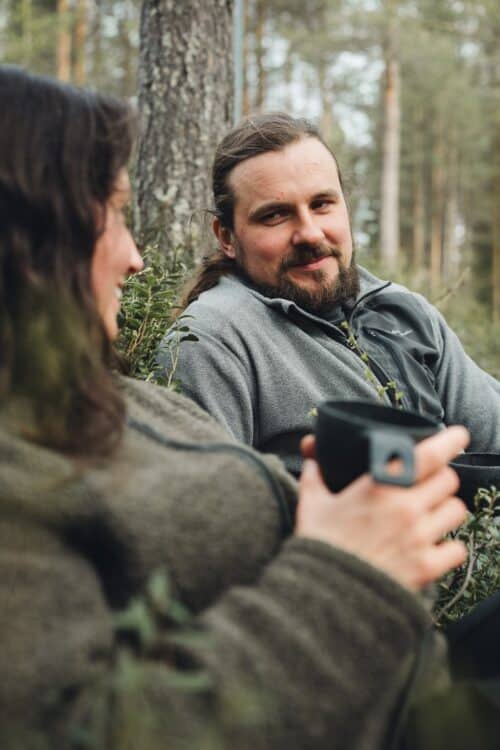
Now, six years after that memorable gaze, the couple run Wild Out from Theresa’s family cabin in Jäkäläniemi, and Tomasz’s Finnish has evolved from two words to the point where he is able to give the interview in Finnish. Howevere, the road to this point wasn’t exactly straightforward.
Both of them ended up in Kuusamo through internships connected to their wilderness guide training—Theresa to Ruka and Tomasz to Hossa.
“The best thing about the school was that it didn’t focus on gear but on building a genuine relationship with nature,” Theresa recalls.
The same couldn’t be said for Tomasz’s first internship in Rovaniemi, where he was rushed around transporting massive groups of tourists to see the Northern Lights.
“Kuusamo was different. When I first arrived here on a February evening and got off the bus at Ervasti Square, I walked six kilometers to the airport in the dark. I saw no one. I thought, this is what the end of the world looks like,” Tomasz says, smiling.
In daylight, he fell in love with the region. To him, Koillismaa embodies the best of Finnish nature: rapids, lakes, fells, cliffs, forests—all in one place.
Before settling in the Jäkäläniemi cabin, the couple lived in downtown Kuusamo next to partying students, and briefly in a 13-square-meter log cabin, where they paid rent by working a few hours a day for the cabin’s owner.
“It definitely wasn’t winter-proof. At night, the dog’s water would freeze in its bowl. But it was a necessary step for us,” says Theresa.
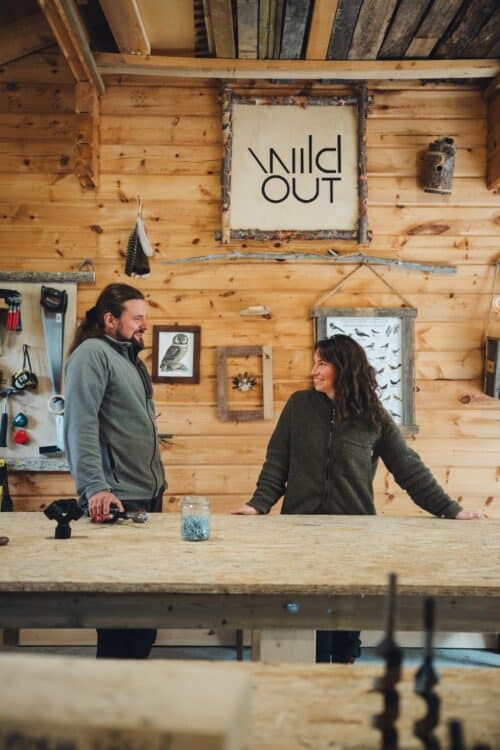
The idea of starting their own business was born during COVID, when guide school switched to remote studies and internships were paused.
Theresa and Tomasz spent their days exploring the forests of Jäkäläniemi. Their bond with each other deepened, as did their connection to the nature around them.
“We walked and skied for long distances without any specific goal or rush. Kouervaara and Naatikkavaara became very familiar,” they recall.
This gradually sparked a vision of the values they wanted to share through their business. They didn’t want to focus only on national parks, but also the everyday nature familiar to every Finn. Instead of following trails, they walk off the beaten path.
“We Finns walk in the local woods. A meaningful spot might be a familiar stone, a field’s edge, or an old trail—places we return to again and again,” Theresa explains.
They also want to invest in summer programs, when nature has more to offer than just snow.
Their website summarizes the philosophy like this:
“We walk where others don’t. We choose the deep forest to feel free. We move slowly, appreciating nature’s fine details. We cook using local ingredients because we value them. We take meaningful actions—because we want to.”

One such meaningful action is a trip where guests build birdhouses.
There are already more than 30 birdhouses made by customers in the forests of Jäkäläniemi and Hossa. Their inhabitants can later be tracked through an online birdhouse map on Wild Out’s website, which shows who lives in which box and when it was last maintained.
“People have responded positively. At first, many feel nervous about using tools. But we encourage them—it doesn’t have to be perfect. It’s wonderful to see customers gain the confidence to try,” Tomasz explains, showing off old tools bought at flea markets. The birdhouses are also made from recycled wood.
“Cooperation with landowners is really important to us. Many are surprised anyone would want to showcase their forest to tourists. But to foreigners, an ordinary Finnish forest is truly unique,” says Theresa.
The couple hopes the birdhouse activity will foster a community, where guests can connect through a website chat or WhatsApp group.
“Someone might maintain a birdhouse built by someone else and message them: ‘A pied flycatcher is nesting here now,’” Theresa envisions.
“We could also build birdhouses with school groups. We believe there’s a lot of potential in this concept,” she adds.
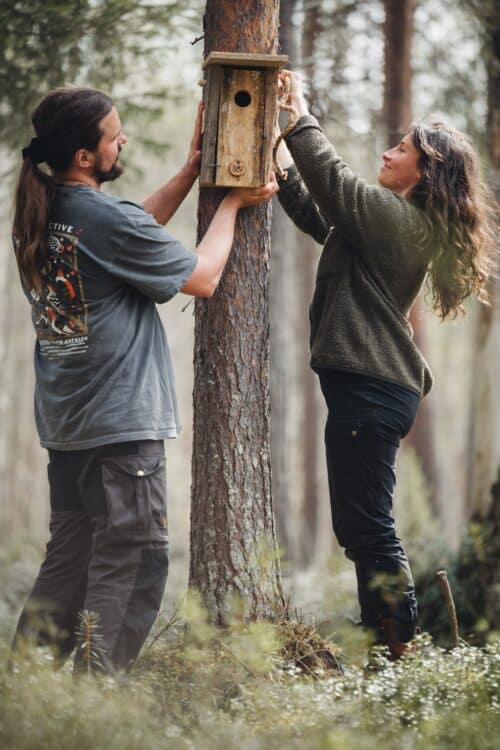
With their own business, Tomasz has also rediscovered his passion for cooking. At Wild Out, cooking outdoors with local ingredients is central. In addition to their own tours, Tomasz occasionally prepares meals for visiting groups in Hossa.
Their cabin’s backroom has been turned into a pantry filled with preserves and dried herbs. As summer approaches, their wild herb teas are nearly gone, but a few fragrant jars remain.
Among their creations: fermented cloudberry petals and roasted cloudberry seeds.
“We try to use every part of the plant to avoid waste,” Theresa explains.
This year’s new project is a vegetable garden behind the cabin. They’ve planted radishes, kale, carrots, celery, wild onions, cucumbers, turnips, tomatoes, and beets.
A crucial part of their projects is the local Vasaraperä community, which always offers help.
“We get timber from Yrjö, snowplow help from Olavi, and foraging tips from the village group chats,” say Theresa and Tomasz.
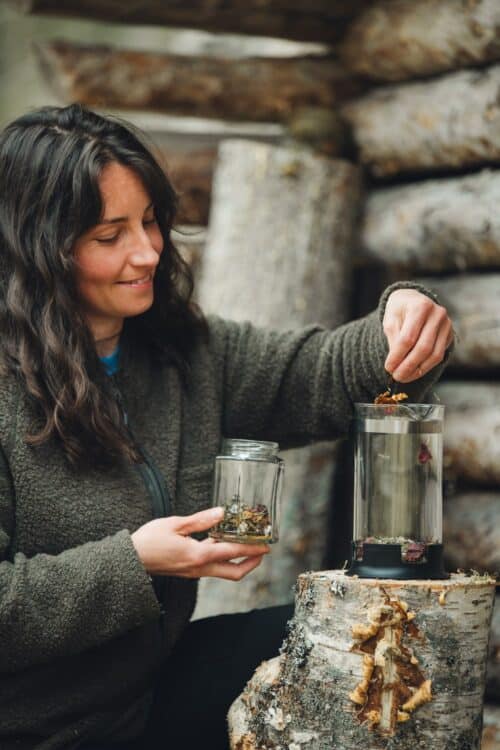
There are other tourism entrepreneurs in Vasaraperä as well. Theresa and Tomasz mention O’Nordic, run by a French couple, and Adventure Apes, operating at the local old school building.
“We also recently welcomed a new entrepreneur who organizes music hikes in nature. Everyone here has their own unique relationship with nature,” says Theresa.
Whenever needed, they’ve also received support from Naturpolis, the regional development agency of Koillis-Suomi. Wild Out is also a member of the Ruka-Kuusamo tourism association, which has brought influencers and vloggers to visit.
“In June, we’re expecting a cycling couple from Germany. We’re located on a couple of cycling routes and offer a 10% discount for guests who arrive by bike,” Theresa notes.
But when guests stop in Jäkälämutka, the goal is to help them pause on a deeper level, too.
“Many people arrive on holiday with a long to-do list. Our aim is to help them truly slow down and notice the beautiful details of nature.”
